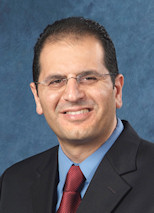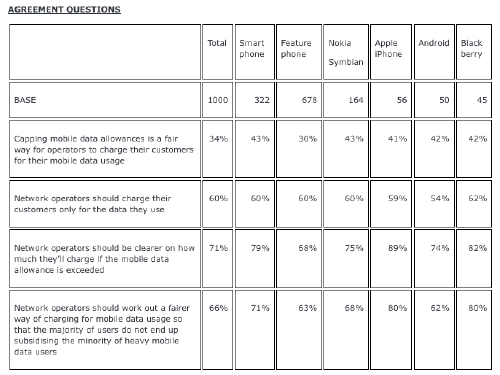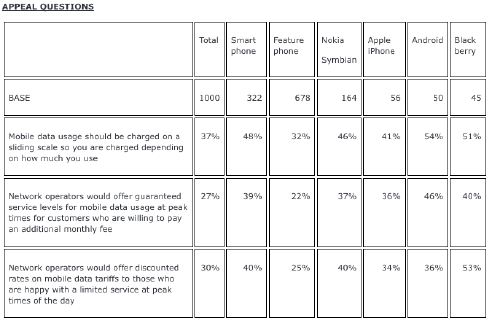Operators have changed the way they are approaching the transition to IP/Ethernet in their backhaul networks, and that has meant vendors have had to respond accordingly, Sten Nordell, CTO of Transmode, tells Keith Dyer.
Keith Dyer:
Hello Sten. A year ago you told us of Transmode’s policy of supporting TDM and Ethernet protocols natively over fibre to allow operators to have a flexible method of backhauling traffic through their network. How has that product policy worked out and what developments in the market have you seen since then?
Sten Nordell:
Hello Keith. It has been a very interesting and exciting year. We’ve just launched our new products in June and we already have mobile backhaul customers in both Europe and North America using them.
I think the biggest change in the market has been that two years ago it looked as though there was going to be a lot of implementation of all-packet based networks, but there is now the sense that those solely packet-orientated developments have largely been slightly held back.
In line with our proposition, we have indeed seen a thrust for operators doing anything that is not solely TDM-based, and indeed 3G and LTE developments are still driving that. What has changed is that two to three years ago people thought a lot of operators would develop a packet-only based strategy. However, what caught everyone out is that they have simply not had the time to make that full transition. The bandwidth growth was simply too great in the short term to wait for complex, long term migration projects.
Keith Dyer:
So last year, although we talked about the fact that operators were running, or leasing, more fibre to base stations, in fact what has happened is that the need for bandwidth now outstripped that capability to do that.
Sten Nordell:
To an extent, yes. We’re still seeing people talk about putting more fibre in the ground – but that takes time. So we’re also seeing providers use anything they can to offload that TDM traffic until they can roll out fibre, whether that is Microwave or whatever else is available. Estimates vary from about 30% to 50% for fibre deployments to base stations and if anything this is increasing due to the surge in bandwidth demand.
What we see is that customers are using the assets they have where they have them, rather than redesigning their whole networks up front. They are using their legacy capacity just to get TDM traffic across the network, and offloading much of their data using Ethernet. So the transition to the full IP environment is taking longer than expected.
Keith Dyer:
Do you sense that there has been a technical reason for that delay, or has it simply been about time to market of the technology that is available?
Sten Nordell:
The reasons have been technical and time to market, as you put it. TDM runs all the signaling and sync for voice traffic, and by putting in a hybrid Ethernet architecture it eases the complexity of the implementation of an all IP network. Operators do not have to deal with the complexity of emulating that sync and signaling over Ethernet. They can focus on a targeted architecture for their packet switched traffic, and that is much easier to co-ordinate. So the sync discussion goes away by keeping the legacy mechanism, and you can still run Ethernet at the same time. It’s faster to build your data-focused network this way, meaning operators can meet their immediate needs. Operators know that this is a temporary solution – but it is better to do this than to wait.
Keith Dyer:
So has that meant that your previous product strategy, of natively transporting TDM and IP traffic over fibre, has had to be modified?
Sten Nordell:
Not really. Our model still fits because that flexible model is what people are doing. Our understanding is that it is too complex to deal with complicated Pseudowire and other approaches. So the basic idea of our product solution was, and still is, right. It’s too complex to make that network change with the growth rates operators have. Our approach of carrying traffic natively over fibre gives operators the ability to put only their Ethernet traffic over fibre in the first instance. It also gives them the ability to remove their legacy access when they are ready, but also keep the legacy transport protocol. That allows a migration when they are ready, versus a straight overhaul to an all-Ethernet approach.
Keith Dyer:
So has this approach led to any changes in the solutions you offer?
Sten Nordell:
Yes, we have taken the decision to also offer enhanced Ethernet support for those customers that are initially deploying Ethernet only. Once you have made up your mind to keep the legacy network, then the way you design the packet network is subtly different. These enhancements can be found in the second-generation version of our Layer 2 Ethernet Muxponder (EMXP), the EMXP II, which includes increased processing power and support for a wider range of Layer 2 features. The enhanced EMXP II provides Layer 2 Ethernet service provisioning and aggregation for transport applications with extremely low sub 2 micro second latency and virtually zero jitter. This makes the unit ideally suited to Ethernet applications where latency and jitter are important, such as services for financial institutions, video distribution and of course mobile backhaul.
To add to our Ethernet focus, we’ve also added a range of Ethernet Demarcation Units (EDU) to our TM-Series. These EDUs are also designed to help operators gain the lowest possible latency and jitter, making the units ideal for rich data applications. The range includes units that provide either demarcation of a single Gigabit Ethernet client signal or aggregation of up to 4 client signals onto a Gigabit Ethernet line within the compact CPE device.
When I talk about enhanced Ethernet functionality the EDU is a good example. It includes service mapping, which allows providers to quickly create Ethernet Virtual Circuits (EVCs) and services can be mapped with advanced bandwidth policies that establish committed and excess throughput and burst rates as well as defined Ethernet & IP service priorities. Also as the hardware based units they can maintain up to 100 Y.1731 & 802.1ag OAM sessions per unit, enabling highly accurate and precise OAM performance monitoring for large-scale wireless backhaul and business service applications.
Keith Dyer:
You mention performance monitoring there. It seems to be a high value topic around Ethernet services at the moment. Is that an additional cost that operators perhaps didn’t envision, in their backhaul plans.
Sten Nordell:
It’s crucial that operators can perform SLA verification and assurance, which means operators must have OAM capabilities deployed at the edge, at the base station itself, to allow fast forwarding and fast packet reading, for instance. The EDU is where all of this happens. But it’s not a major cost to them, and pulling the fibre to the base station is still likely to be 98% of the cost. Perhaps operators hadn’t envisioned having one device for terminating Ethernet and one for terminating TDM, but on the other hand it’s a lower cost than an all-IP approach and the complexity that brings, as we discussed earlier.
Keith Dyer:
So when do you see operators moving to this enhanced Ethernet solution, and what do you think Transmode’s advantage is in this market?
Sten Nordell:
We’ve just made both the Native Ethernet and TDM Multi-Service Mobile Backhaul product that we discussed last year and the enhanced Layer 2 Ethernet product commercially available this summer. So it’s a bit early for us to talk about shipping in volume, but we already have mobile backhaul customers in both Europe and North America, as I mentioned earlier. .
In terms of the advantages that Transmode brings to the market, we can help both those that have integrated their networks via the Multi-Service approach and those that haven’t. Those mobile operators that have not integrated their networks, are out shopping for solutions and most of them are not after Pseudowire, but are after pure Ethernet.
They are also not after Enterprise-optimised products that have been tweaked to the carrier market. Our focus is on carrier class, enhanced Ethernet solutions, and I think that’s the difference we provide.








